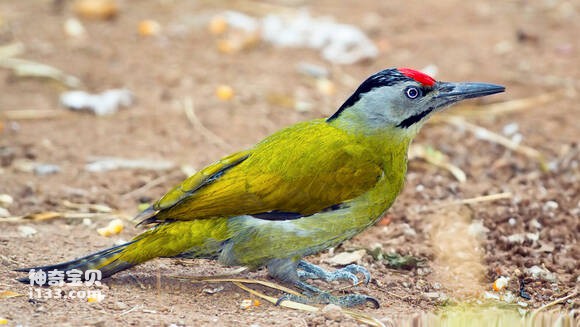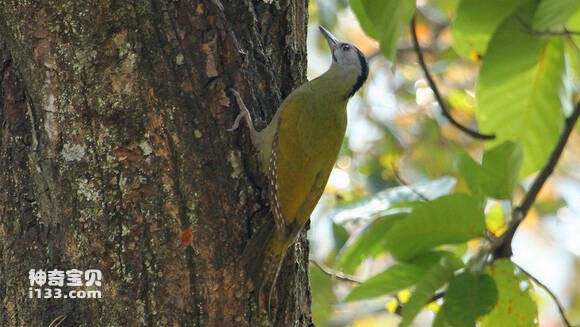Picus guerini
IUCN
LCBasic Information
Scientific classification
- name:Picus guerini
- Scientific Name:Picus guerini,Black-naped woodpecker
- Outline:Climbing birds
- Family:
Vital signs
- length:26.5-32.1 cm
- Weight:105-159g
- lifetime:No textual research information is available
Feature
Distribution and Habitat
It is distributed in Albania, Austria, Belarus, Bangladesh, Belgium, Bhutan, Bosnia and Herzegovina, Bulgaria, Cambodia, China, Croatia, Czech Republic, Estonia, Finland, France, Germany, Greece, Hungary, India, Indonesia, Italy, Japan, Kazakhstan, North Korea, South Korea, and Laos Republic of the Republic, Latvia, Lithuania, Luxembourg Liechtenstein, Macedonia, Malaysia, Moldova, Mongolia, Montenegro, Myanmar, Nepal, Netherlands, Norway, Pakistan, Poland, Romania, Serbia, Slovakia, Slovenia, Spain, Sweden, Switzerland, Turkey, Thailand, Ukraine, Viet Nam.
It is distributed in Northeast China, North China, Inner Mongolia, Qinghai, Tibet, Xinjiang, Sichuan, Gansu, Southwest China, East China, South China, Hong Kong, Taiwan and Hainan Island and other eastern, central and southern provinces.
It mainly inhabits low mountain broad-leaved forests and mixed forests, but also occurs in secondary forests and forest margins, and rarely in primitive coniferous forests.
Appearance
The male bird has black on the forehead base, vermilion on the forehead and top of the head, gray or dark gray on the back of the head, pillow and back of the neck, mixed with black feathers, black first, gray on the brow, gray on the ear feathers and side of the neck, and wide and obvious on the zygomatic lines. Back and wings covered with olive green, waist and tail covered with green yellow. The central tail feathers are olive brown, with two gray-white semicircular spots, the end is black, the shaft is bright black, and the outer tail feathers are dark brown with dark transverse spots. The primary feathers are black, the outer vexes have white square spots, the inner vexes base is also white spots, the secondary vexes are olive yellow, the white spots are not obvious. The chin, throat and foreneck of the lower body are grayish white, the thorax, abdomen and flanks are grayish green, the undertail covers are grayish green, and the tips are grassy green.
The female is dark gray fr
Details
The black-occipitated green woodpecker is known as Picus guerini or Black-naped woodpecker, with 14 subspecies.

The black-occipated green woodpecker is often solitary or in pairs, and rarely in groups. Autumn and winter often appear on the roadside, farmland side of the open forest, but also often to the village near the small forest activities. Flying fast, in a wave. They often feed in the middle and lower part of the trunk, but also often feed on the ground, especially on the ground and the ant mound. Usually rarely tweet, the cry is simple, only issued a single syllable, "ga-ga-" sound. However, during reproduction, the song is very frequent and loud, and the tone is longer and changeable, and its sound is like "gao-gao-gao-".

It feeds mainly on ants, silverfish, longicorn larvae, lepidoptera, coleoptera, hymenoptera and other insects. Foraging is often done by spiraling up the base of the trunk, and when it reaches the branch, it flies to the base of another tree and then searches up again, to hook out insects that can eat under the bark or into the woody parts of the trunk with long tongues. They occasionally eat plant fruits and seeds, such as mountain grapes, red pine nuts, yellow lily cones, and grass seeds.

The breeding period of the black-necked green woodpecker is from April to June. At the beginning of April, pairs of activities were seen, and the sound increased, chasing each other, and issuing a "quack" sound. Nest in the tree hole, the nest hole is completed by the male and female birds together, new peck nest hole every year, generally do not use the old nest. Most of the nest holes were selected in mixed forest, broad-leaved forest, secondary forest or forest margin broad-leaved trees such as manchus, aspen, plum, oak, elm and other wood decay. The hole is 2.7~11m high from the ground, the opening is round or oval, the diameter is 5~6cm, the inner diameter of the hole is 13~15cm, and the depth of the hole is 27~42cm. The nest has no internal bedding. Breeding 1 litter a year, in early May began to lay eggs. Each brood laid 8 to 11 eggs, mostly 9 to 10 eggs. Eggs are milky white, smooth without spots, oval, the size of 28.5~30.7mm×21~22.9mm, average 29.5mm×21.6mm, weight 6.5g. After the eggs are produced, the eggs begin to incubate, and the male and female birds take turns to bear the incubation period of 12 to 13 days. Young birds are late sex, and male and female birds raise young together. At the beginning of the warm brood more time, fewer times to feed the brood, and more into the nest to feed the brood. In the later period, the chicks are not warm, the number of feeding chicks increases, and they all stand in the hole and extend their heads into the hole to feed the chicks. After 23 to 24 days of feeding, the chicks can fly and leave the nest.
Listed on the International Union for Conservation of Nature (IUCN) 2012 Red List of Threatened Species ver 3.1 - Low Risk (LC).
Protect wild animals and eliminate wild meat.
Maintaining ecological balance is everyone's responsibility!








